An expert’s guide to inbound and outbound sales
Inbound and outbound sales are different approaches that offer various benefits. But which one is appropriate for your business? Read everything about inbound and outbound sales in this article.

Pushing your product to market is one thing. But demonstrating its true value to your audience and driving your sales 10x is an entirely different ball game.
The question that prevails among business owners is - what could be the best sales strategy for the company to succeed?
Some say “inbound sales”, and some say “outbound sales”.
Which one is it?
Here is a little truth - It all depends on the business model, the customers, and the ability to invest.
So, are you ready to know which one is the best for your business?
Let us dive in!
In this article, let us learn about:
- What are inbound and outbound sales?
- Difference between inbound and outbound sales
- Pros and cons of inbound and outbound sales
- Inbound vs outbound sales - which one is better for your organisation?
- How to build strong inbound and outbound sales strategies for your business?
What are inbound and outbound sales?
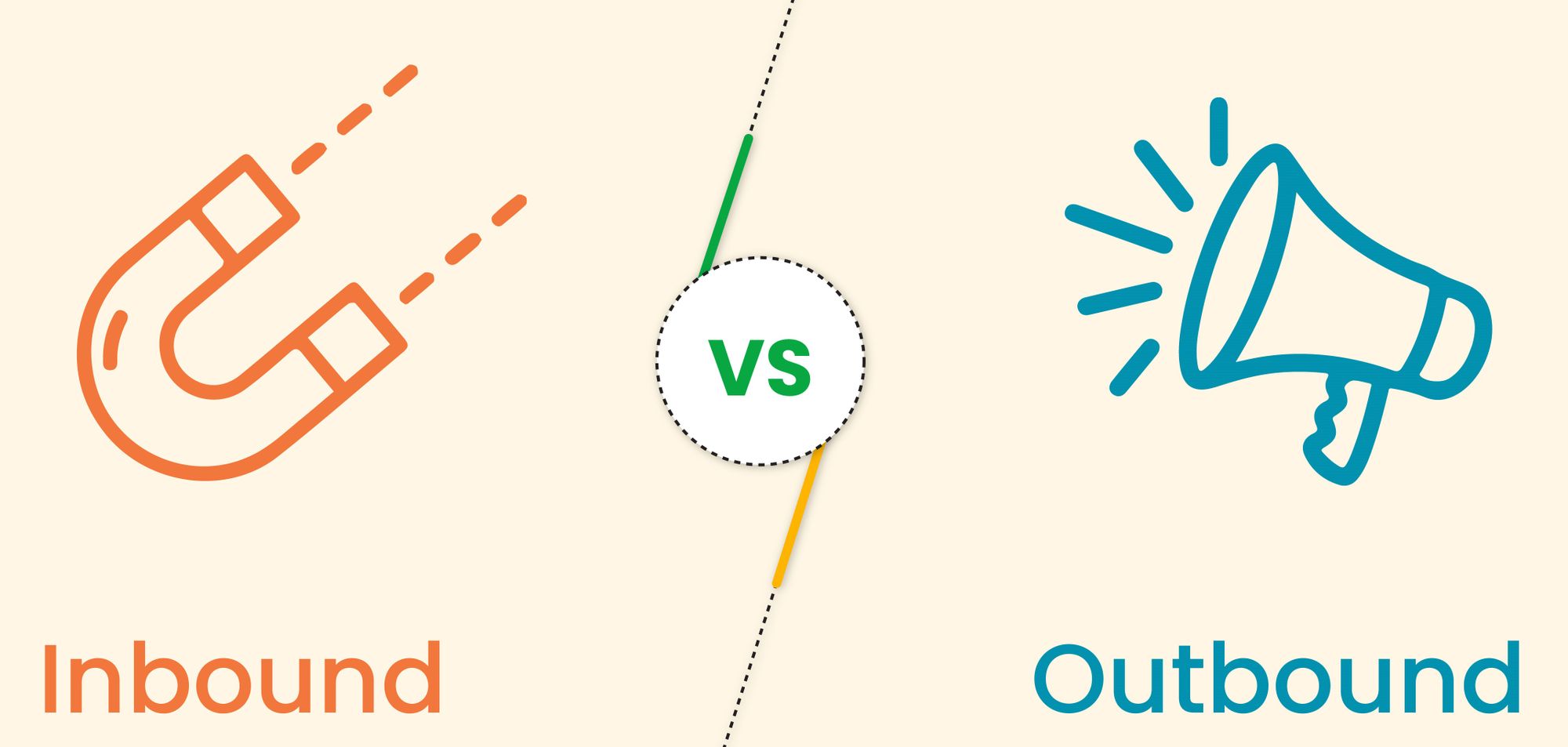
Inbound sales
According to Thesaurus, “inbound” = “incoming”.
So, “inbound sales” means the sales that are incoming through customer-generated, multichannel pathways.
Simply put, it is a type of sales process where potential customers reach out to your organisation to inquire about your products or services.
The stages that are involved in the inbound sales process are: Identify, Connect, Explore, and Advise.
- Identify: You should decide who is a good fit for your business. Decide your prospect’s persona and attract the right set of potential customers.
- Connect: The first contact with your identified lead happens. It can be either over the phone, in-person or virtually.
- Explore: You walk in the shoes of your prospect and understand their problems and their expectations.
- Advise: You present your diagnosis and prescribe a solution.
In the end, you close the deal based on how your prospect wants to take it forward.
On the other hand, outbound sales lay themselves out differently.
Outbound sales
According to Thesaurus, “outbound” means “outgoing”.
“Outbound sales” are the sales that are generated through the outreach efforts of the sales team. It is company generated and a single-channel route toward a lead conversion.
Here are the steps that are involved in outbound sales.
- Prospecting or lead generation: The step mainly consists of accumulating data of potential customers. This can be accomplished through several methods such as lead generation through LinkedIn, web directories, social media platforms, or other prospecting tools, etc.
- Cold outreach: Outbound sales cold calling is a classic example of cold outreach. However, cold outreach often needs personalised messages and conversations that are relevant to the potential customers and their pain points. To support this at scale, it's essential to build a reliable cold email infrastructure that ensures deliverability, sequencing, tracking, and compliance.
- Lead qualification: This is a stage when the prospect shows interest in your service or product and accepts a sales call. This is a standard stage of the sales pipeline when your sales team performs demos or product presentations. Alongside, they also try to understand the pains of the lead and propose tailor-made solutions.
- Closing the deal: This is a stage where the lead is either converted to a customer or the deal is lost. In this stage, the deal is either marked as won or lost.
Difference between inbound and outbound sales
There are various differences between inbound and outbound sales. But first, let’s establish the core differences between inbound and outbound.
Inbound is
- Personalised: Addresses a particular concern of the potential buyer.
- Subtle: Relies on content marketing, sales strategies, and the creation of information.
- Flexible: Plenty of options and channels to attract the leads.
- Passive: Waits for buyers to take the first step or make the first contact.
Outbound is
- General: Focused on spreading the information to a wider set of audiences.
- Straightforward: Presents unique value propositions to the buyers via cold emails, social media, etc.
- Structured: Relies on a well-organised sales process and focused outbound sales team.
- Active: First to reach out to potential customers.
Now, with that breakdown, inbound and outbound sales don’t look that daunting. Isn’t it?
Here is an, even more, closer look into the differences.
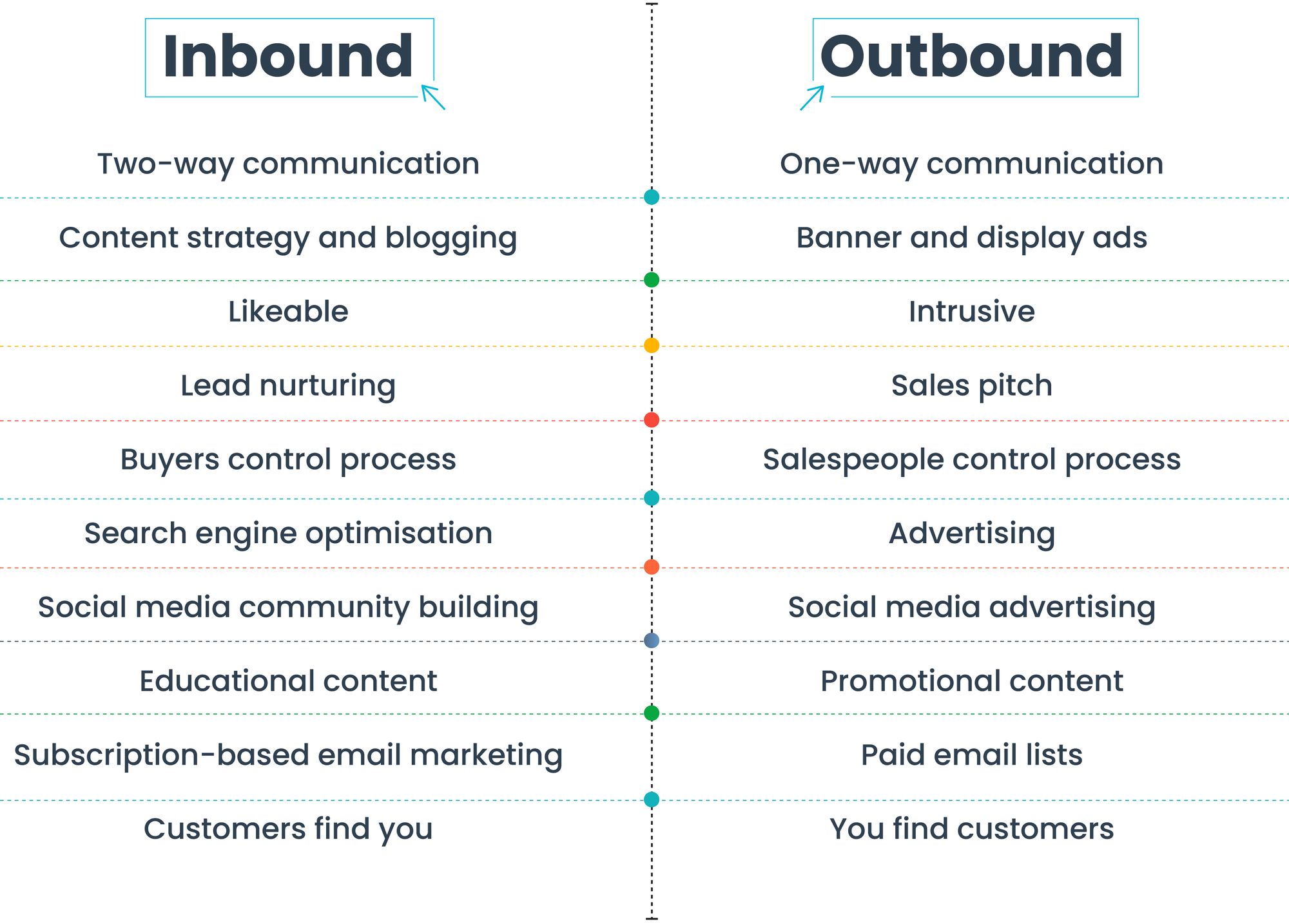
Inbound and outbound are polar opposites, with their own sales strategies and sales KPIs and metrics. And it is upon you to pick which one is better for your business.
We, for sure, don’t want you to pick the sides randomly. So, here is a list of benefits and challenges associated with inbound and outbound sales. This information can help you decide what is best for your business.
Benefits and challenges
Inbound sales and marketing
Benefits of inbound sales and marketing
- Non-invasive: Your prospects can read your blog posts, scan through the information you publish/share and attend your webinars on their own time.
- Educational: Often, the content that is produced for inbound sales are designed for each stage of the sales funnel.
- Quantifiable: Your strategy can be tied up with sales metrics and can be monitored over time.
- Updated: Your website and the content is continuously updated. This helps in attracting qualified leads over time.
And the sales generated by such inbound marketing comes to you after developing trust in your business.
Challenges of inbound sales and marketing
- Continuous maintenance: Since your content speaks to your customers directly, there is always a need to keep it updated and have quality checks time and again.
- Trial and error: Often, the marketers associated with inbound sales should try and test out various types of content to entice the customers to convert.
- Holistic approach: Inbound needs a holistic strategy. Hence, you may have to buy tools that help you in implementing campaigns across various channels.
Outbound sales and marketing
Benefits of outbound sales and marketing
- Brand awareness: With targeted marketing, you can create brand awareness among the people who haven’t even heard about your brand.
- Immediate results: As and when your ads pop up, the people who are interested in buying your product or services are likely to take immediate action and purchase your offerings.
- Traditionally accustomed: Everyone has accustomed to the TV ads, newspaper ads, the billboard, etc. Hence, your potential customers know that they can trust the ads.
Challenges of outbound sales and marketing
- Generalised: Outbound marketing is not relevant to everyone. Hence, many people may just pass it.
- Easy to tune out: Most of us have skipped the youtube ad, muted TV commercials. That’s what your potential customers may do too.
- Difficult to measure: It is difficult to measure the effectiveness and the conversions of outbound marketing.
- Costly: Banner ads, TV commercials, newspapers, billboards - all these burn a hole in your pocket. Outbound marketing is pricey and often, may not even be affordable to small businesses.
Summing up, outbound is sending messages at a scale while inbound is a targeted approach. While conversion rate is high in outbound, it comes with a high acquisition rate too. Contrarily, inbound content can be personalised to fit your prospects.
At this point, you are probably wondering about how to pick the best one for your business? Here are a few factors to help you decide!
Which one is for you - “Inbound” or “Outbound”?
Speed of Execution
Inbound speed of execution: Slow.
Inbound lead generation is through organic channels such as search engines, referrals, or word of mouth and hence, it may take a good amount of time to get noticed.
Outbound speed of execution: Faster than inbound
If you are good at finding the right set of audiences, drafting unique value proposition email copy, and being aware of email tools, you can get leads right in your door today!
Winner: Outbound speed of execution
Targeting
Inbound targeting: Limited control
You might have performed thorough research on buyer personas, demographics, etc. and steer up an excellent inbound strategy. But, your control over the people is limited. In other words, you are just a provider and it is up to your audience to take it or leave it.
Outbound targeting: High control
In outbound targeting, you can have a high level of specificity. By targeting the right set of audience, you can initiate the conversation in no time.
Winner: Outbound targeting
Timing
Inbound timing: Shorter sales cycle
Since the leads in the inbound sales cycle are aware of their problems and have built trust about your business, it is easier to close the deals in short periods. Typically, the inbound sales cycle is 3-5x shorter than the outbound.
Outbound timing: Longer sales cycle
The first and foremost challenge of outbound sales is getting the potential customer to open the cold mail or attend the cold call. And the list of challenges continues. You need to make your prospects trust you enough to conduct business with you.
Winner: Inbound timing
Awareness
Before initiating the sales conversation with your prospects or leads, you should be aware of their level of awareness. This is of utmost importance to devise your sales strategy.
Refer to Eugene Schwartz’s level of awareness map to understand the awareness level of your potential customer.
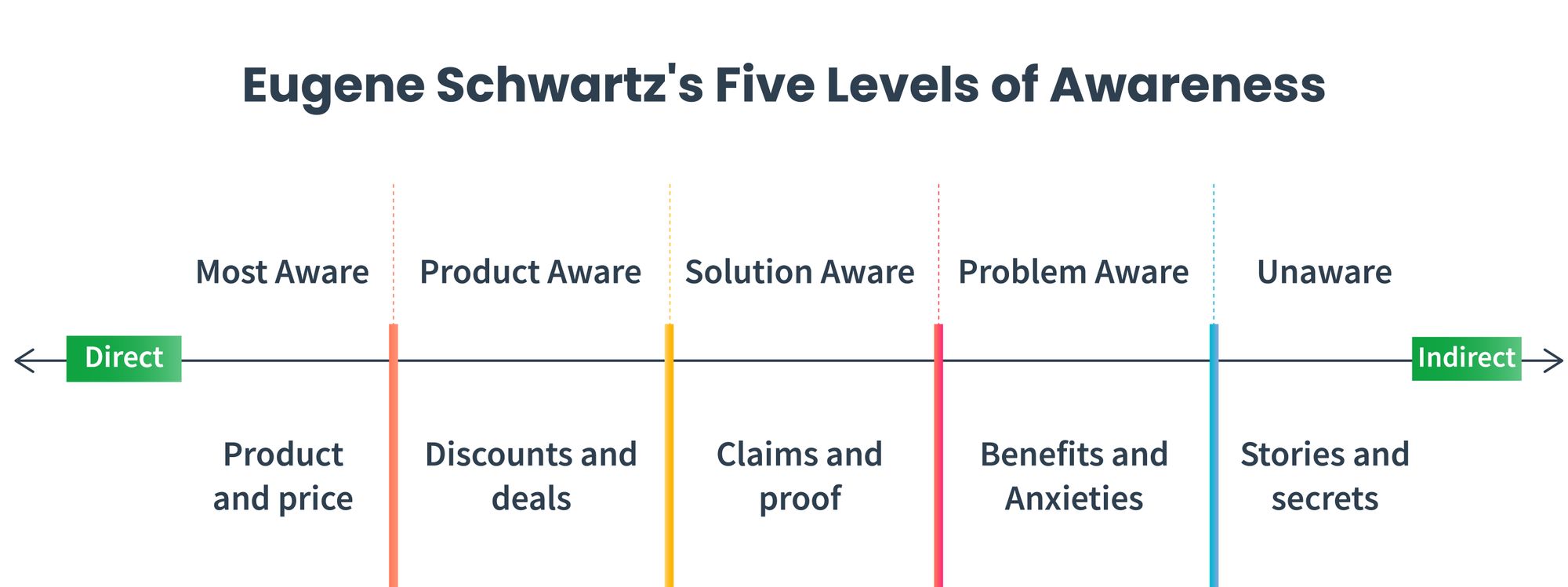
Inbound awareness: High
In inbound marketing or sales, your leads are problem aware or may even be solution aware.
Outbound awareness: Low
In outbound, the level of awareness of the prospects is unknown and the likelihood of high-level awareness is low.
Winner: Inbound awareness
Trust and Credibility
Inbound: Before the lead comes in
In inbound sales, the prospects contact you after they trust you, your brand, and your product/service.
Outbound: After the lead generation
In outbound, the leads are first generated and then the sales representatives with their sales tactics build trust among the leads.
Winner: Inbound
Investment and Return
Inbound: One-time investment
Inbound has upfront time and money investment. Once invested, it can be reused again and again. The content you create for inbound lead generation may pay you off for decades. Of course, it may take time but it is possible. For the same reason, it is almost impossible to predict the ROI of inbound efforts.
Outbound: Recurring investment
The investment for outbound sales is ongoing. You will have to invest in both: the campaigns you conduct and the backend processes of following up with the leads. However, the return can be fast and good too. But as opposed to inbound, the outbound has less power to stay for long.
Winner: Tie
Overall Quality
Well, the overall quality factor varies with the value proposition and cost of your offerings.
Inbound: High
According to ironpaper, 59% of marketers claimed that inbound marketing provides quality leads, 16% supported outbound marketing and the rest of the marketers were unaware or unsure.
Considering the endless options and the brands who offer the same products and services as you, if your lead has contacted you, they have chosen you! Hence, unarguably, the quality of your leads will be high.
Outbound: High or Low
If targeted correctly, even outbound leads can be of high quality. In the sense, your set audience may be fit for you but they may not be ready to buy now. They may not even be aware of the problems they are facing. Hence, the average overall quality of the leads may not be as high as inbound sales.
Winner: Inbound
To sum it up, a business should run both strategies. While inbound builds your high-quality opportunities slowly and steadily, outbound strategies can give way to potential clients right away. The real tactic lies in how well you balance both strategies.
How to build strong inbound and outbound strategies for your business?
More leads. More clients. More revenue.
All of it is possible when the inbound and outbound strategies are in place.
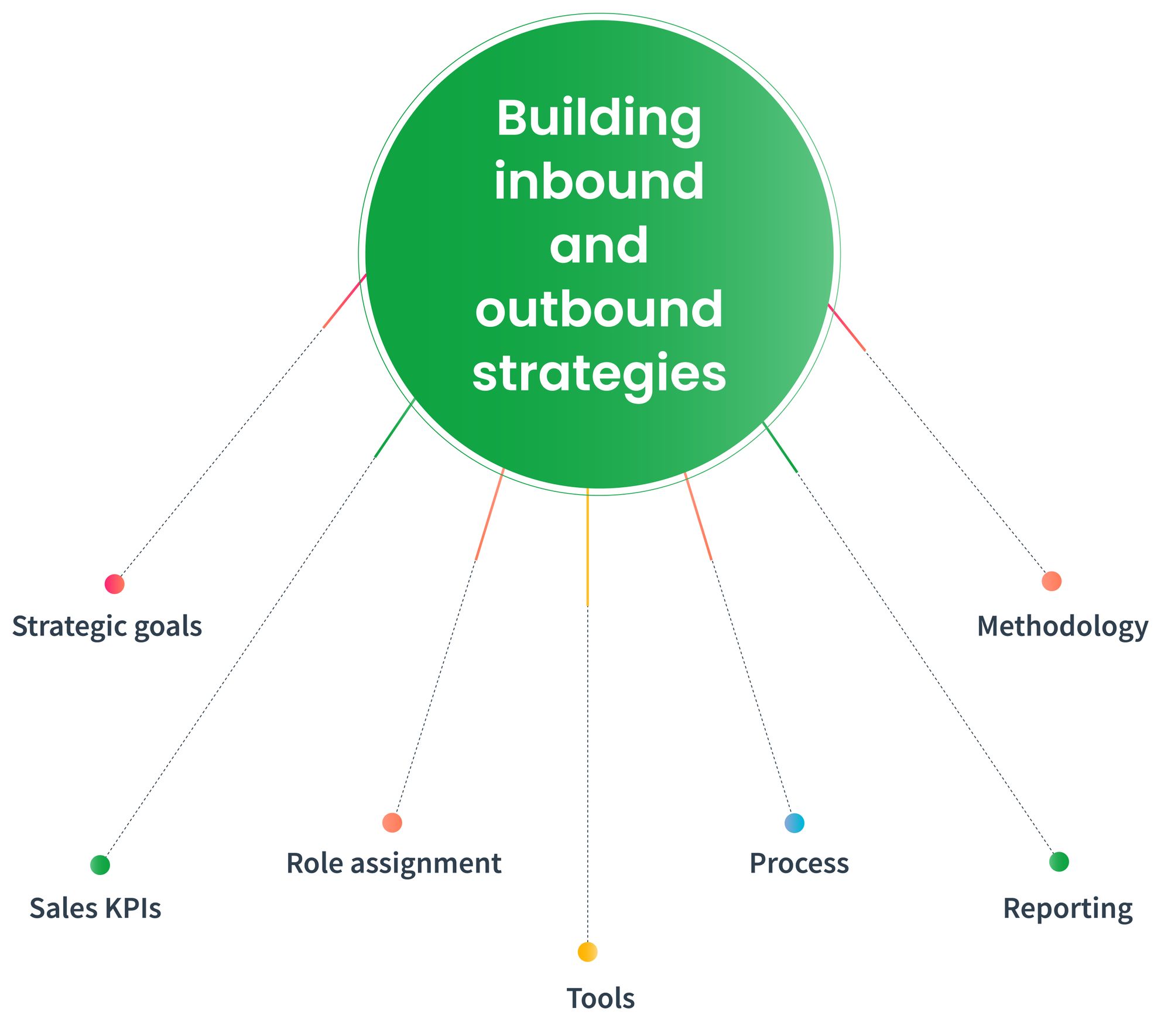
By implementing classic elements of a good strategy in your inbound and outbound activities your business can gear up to succeed. These elements include:
- Strategic goals: To provide meaning and worth to the strategic activities, it is necessary to have a vision and goals. Hence, specify the organisational goals and tie them up with inbound and outbound sales strategies. These strategic goals should be understandable to the entire organisation.
- Define KPIs: Formal. Meaningful. Reasonable - your sales KPIs should be all of it. When the KPIs are defined, the vision towards your inbound and outbound sales strategy will be clear.
- Role assignment: Define the roles and responsibilities of the individuals and the team.
- Tools: Identify all the tools you would need to support the inbound and outbound sales process within your organization.
- Process: Frame a formal process and a step-by-step guide of inbound and outbound sales for your team.
- Reporting: Determine the reporting cadence across different KPIs. Solidify a complete reporting plan and ensure the team adhere to it.
- Methodology: Define the skills and methodology required for inbound and outbound sales.
When all these elements are enforced in inbound and outbound sales strategies, the path towards growth and success will become clearer.
Inbound and outbound are unique in their own way. While they are from different directions, they are also interdependent and intertwined. While inbound activities can provide your business with a strong foundation and offer you long-term growth, outbound activities can help your business to prosper right from the start.
Do you want to know how you can personalise your inbound and outbound sales strategies for your business? Join our exclusive sales community!
